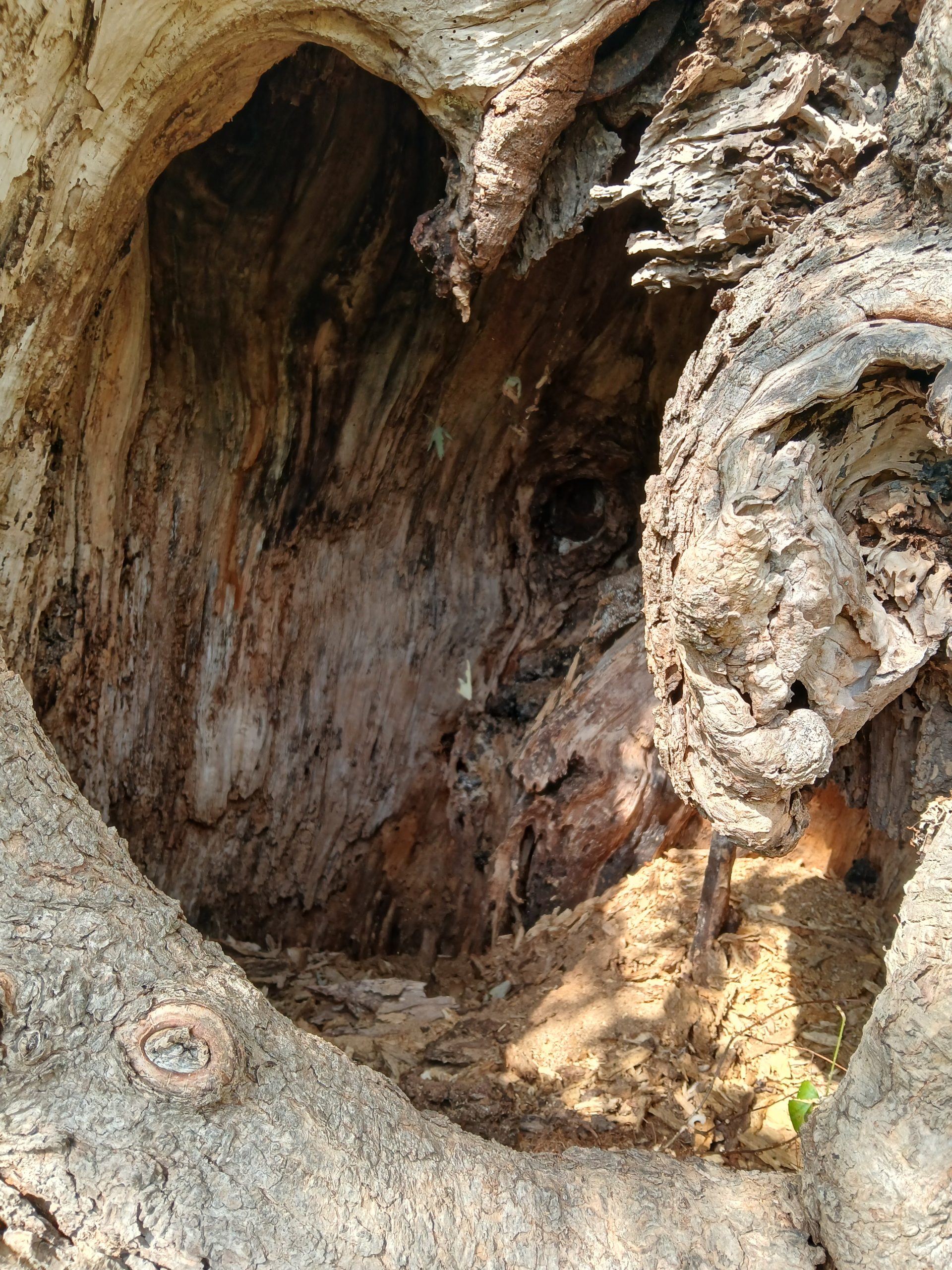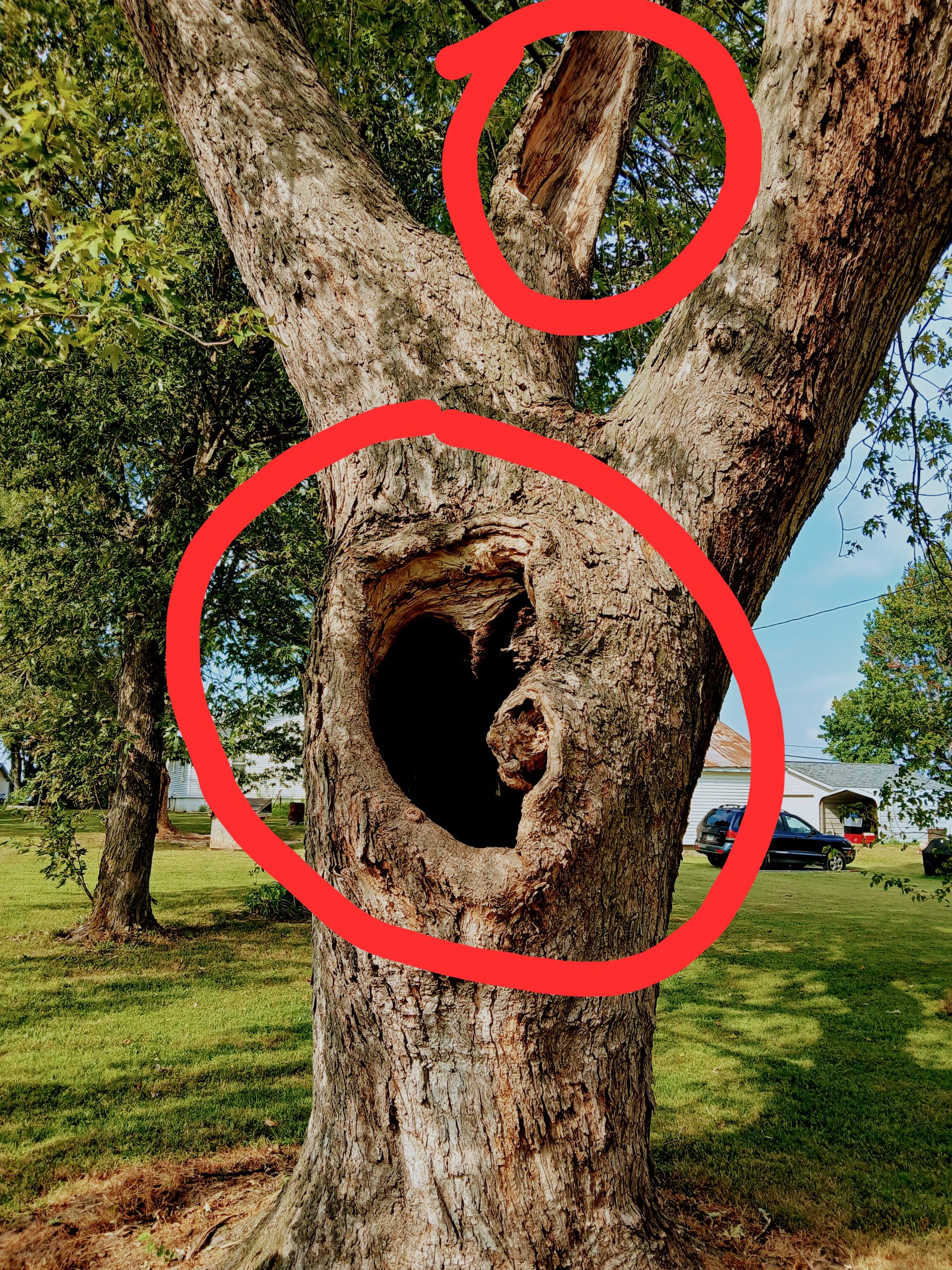You’ve probably seen it before—a tree with a dark, hollow opening where two limbs meet. Sometimes it looks like a narrow crack. Other times, it’s a deep void that seems out of place, almost like something’s missing.
But what causes those strange openings? And more importantly—should you be worried?
Let’s dig into what’s really going on.
When a tree gets injured—whether from a storm, improper pruning, insect damage, or even a bump from a lawnmower—it doesn’t heal like human skin. Instead, trees form a protective barrier around the wound. This process is called compartmentalization, and it helps prevent infection from spreading.
However, if the injury has already allowed moisture or decay to set in, the tree can end up sealing in that rot. Over time, this leads to the formation of cavities—those hollow spots that look like harmless imperfections but can pose serious risks.
Even though the outer bark is mostly intact, the inside of this tree shows deep rot and decay that’s been sealed off over time.

Cavities often begin with damage. High winds and heavy limbs can tear bark apart. When two branches grow too closely together, forming a narrow “V” shape—called included bark—it creates a natural trap for water and debris. That buildup can eventually lead to decay.
Improper pruning is another culprit. A stub left behind from a bad cut or an open wound that never seals properly can become an entry point for fungus or pests. Lawn equipment can do damage too—repeated bumps from mowers or trimmers wear away bark over time, weakening the tree’s defenses. And once exposed wood becomes wet, rot can spread fast.
While a tree cavity might not seem like a big deal at first glance, it can become a serious problem. These hollow areas often develop where two limbs meet—already a structurally vulnerable point. They can hide internal rot, weakening the tree from the inside out. In some cases, the structural damage is so severe that the tree or a major limb can collapse during a storm.
Ex-Tree Service proudly serves Southern Illinois, including De Soto, Carbondale, Marion, and surrounding areas.
Call or text us at (618) 525-8553 to schedule your free tree safety check.
And remember—if you’re seeing tight branch angles, visible holes, or splits where limbs meet, that’s your tree’s way of telling you something’s wrong. Don’t wait until a limb falls to take action. We’re here to help.

